Talks
Digital Frictions in Nonvisual Accessibility and the Built Environment
When digital amenities like signage, mapping, ticketing and retail kiosks are designed to cater to people who perceive visually, Blind and visually impaired travelers experience heightened, prolonged digital frictions. We'll look at digital amenities that are legible and efficient to nonvisual users, and some that are not. Rather than focusing on the technical means for making digital amenities accessible, we'll explore the impact of digital inhospitality on individual autonomy, confidence and choice.
Chancey Fleet
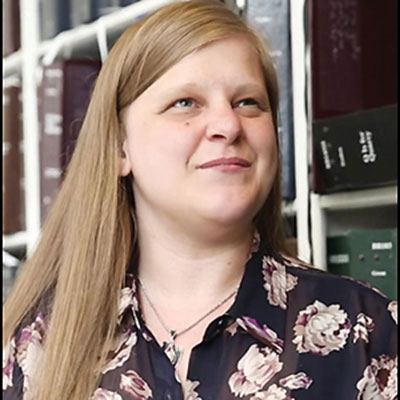
Chancey Fleet is a Brooklyn-based accessibility advocate. Fleet coordinates technology education programs at the New York Public Library's Andrew Heiskell Braille and Talking Book Library. Her current library-based projects include group workshops highlighting mobile technologies for independent living and information literacy; programs introducing youth and adults to non-visual techniques for coding and making with Arduino; and the Dimensions project (a recipient of NYPL’s 2016 Innovation Grant for staff projects), which equips community members with the training and tools they need to create accessible tactile maps, diagrams, graphics and objects. Chancey was recognized as a 2017 Library Journal Mover and Shaker. In her Data & Society fellowship work in 2018-2019, Chancey hopes to deepen public understanding and spark widespread curiosity about how cloud-connected accessibility tools enhance or undermine digital equity, autonomy, security, and privacy.
Accessible maps and how they create welcoming inclusive spaces
Maps help define the territories we can explore. In creating accessible spaces and turning them into inclusive places, maps can help many people with differing physical and cognitive capacities. This talk will use an international museum project to talk about the design of accessible maps, both as physical and information artefacts. It will show some ways information is reworked for multi-modal comprehension and how maps can assist people in more ways than simply finding their location. The talk will also discuss how such maps often fail and in what ways we can mitigate some failures. Accessible places need to be welcoming spaces. Maps help provide that good welcome: giving a sense of direction, an idea of what is valuable to visit and of how a person can be confident in the confusing excitement of new places.
Alastair Somerville
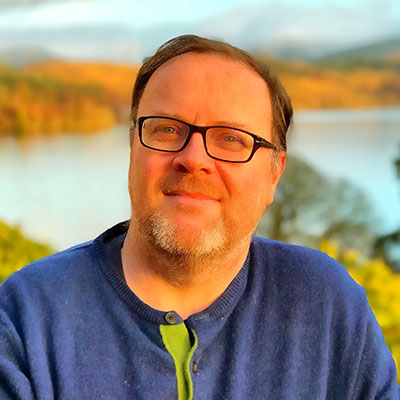
Alastair Somerville is a Sensory Design Consultant. He works with government agencies, museums and charities in the design of wayfinding systems and the design of public spaces for people with a range of physical and cognitive capacities. Working with new research in perception and new technologies, like VR and 3d printing, he works with people with lived experience to create practical solutions to make places welcoming and accessible to all.
Fixing Built Environment Design Education
Over 35 years ago Canada changed our Charter of Rights and Freedoms, and then our Human Rights Codes, to recognize that people with disabilities are equal under the law and that spaces shall not discriminate against them.
Great, but then something strange happened, or rather didn’t happen: Education for architects, interior designers, landscape architects, lighting consultants, signage designers, and in IT, AV, industrial design and other sectors, did NOT keep up to capture that level of equality for all people of all abilities. We have been and continue to miss out on all that amazing creativity and design problem solving.
Getting this fixed is clearly long overdue and is one of the key recommendations of the David Onley AODA review report from January 2019. We need to ensure no new graduates leave school having learned the old discriminatory design standards, having maybe only taken one course, or had accessibility taught in passing, or as an afterthought.
So what’s missing? Where to start? This talk will review what accessibility experts recommend in order to address the most common problems and how the Royal Architectural Institute of Canada (RAIC) is taking a leadership role in developing the first accessible design course for both their students and as part of the continuing education for their membership.
Thea Kurdi
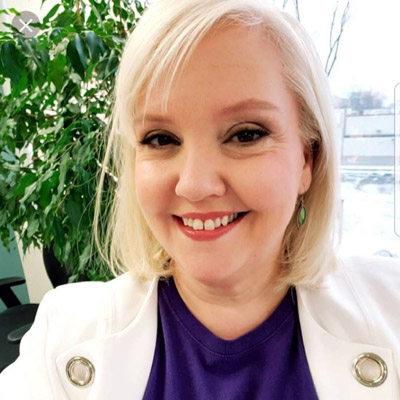
Vice President, DesignABLE Environments Inc.
Thea Kurdi is an accessibility specialist and dynamic speaker known for her enthusiasm for teaching. She has presented workshops, keynote addresses and lectures at local and international events for design professionals, building owners, and policymakers. From the human rights code to evidence-based design and increased marketability, Kurdi shares her passion for how accessibility is fundamental to successful architecture.
Accessible Design in Japan
Tokyo will be hosting the upcoming Olympic and Paralympic games in 2020 and Japan is seeing improved accessibility in anticipation.
There are existing national standards on the theme of “Accessible Design” in Japan, but it has been recommended to make buildings, facilities, transportation, and daily necessities easier to use for older people and people with disabilities.
Makoto will outline Japan’s national accessibility standards, what recommendations are being made for improvements, and introduce various examples of Japanese “Accessible Design”.
Makoto Ueki
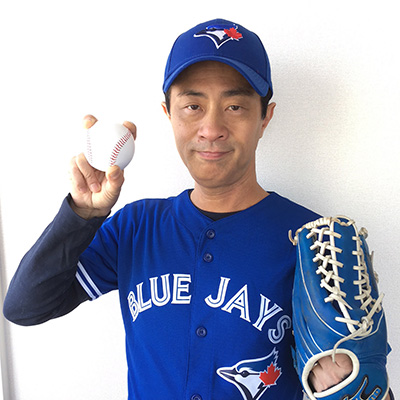
Web Accessibility Consultant in Japan. Makoto has been contributing to the JIS (Japanese Industrial Standard) Working Group and W3C AG (Accessibility Guidelines) Working Group (currently working on the Silver task force) as a web accessibility expert. And he was a chairman of the Web accessibility Committee in Japan (WAIC) from 2012 to 2019. He is the first Japanese who got cerrtified as the IAAP's Certified Professional in Web Accessibility (CPWA). He is also a watcher of the accessibility in the real life and is sharing the photos of the accessible design stuff on Twitter.
Holistic Design for the Built Environment
The permanence and capital cost of the built environment often demand universal solutions that address the needs of all, both now and into the future. Limited by the time and cost of building renovations, it’s important that design solutions serve the greatest number of end users upon implementation. But that doesn’t preclude an inclusive design process that actively engages underserved or underrepresented communities.
As more design firms take this approach with the built environment, designers are moving beyond building code compliance and discussions about bathrooms—the next step is to take a longer look at how our buildings do not always match the needs of their users. Join us for a conversation of radical inclusion in a quest to make us all universally better designers.
Maxwell Ng
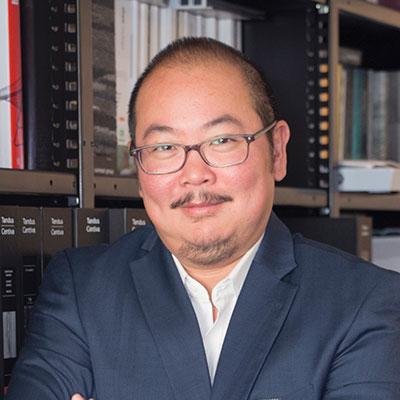
Maxwell Ng is an Architect with over fifteen years of experience designing university spaces, commercial workplaces and elder housing. He holds a mechanical engineering degree from Boston University and an M.Arch from the Boston Architectural College. A recent transplant from the US, he previously served on the board of the Massachusetts Transgender Political Coalition (MTPC), the Queer Asian Pacific-Islander Alliance (QAPA), and is a founding player of the TrailStormers, the Boston based softball team for trans and gender variant people. He currently works for the international design firm, Gensler where he co-chairs the Diversity and Inclusion Working Group for the Toronto office.
Amy Pothier
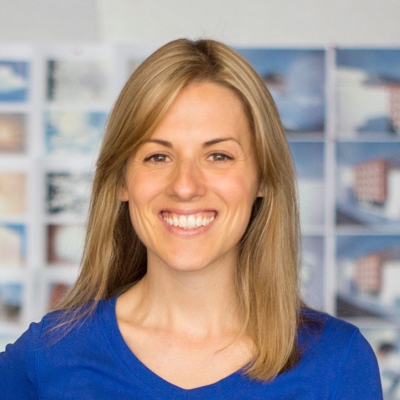
Associate - Inclusivity and Building Code Specialist at Gensler.
An interior designer by education, Amy has always been interested in the technical parameters of design, diving right in to become a building code consultant. Recognizing that the building code minimums were not acceptable to designing accessible spaces, she became an accessibility consultant working on projects on a more universal design approach. She has since combined her love of building codes with her passion for universal design as the practice area leader for health & wellness at Gensler’s Toronto office, imbuing her passion for code compliance and accessibility advocacy into projects across Canada.
Dan Seljak-Byrne
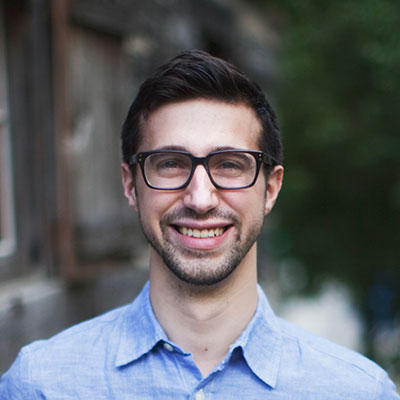
Dan Seljak-Byrne is media professional working at the intersection of visual and written communications. At Gensler, he works primarily in the marketing and communications department while contributing to the Diversity and Inclusion Working Group and other initiatives across the larger organization. He writes about mental health and runs a weekly newsletter about design and urbanism through an equity lens called Another Glass Box.
Designing for Dwarfism
The dwarfism community, much like any community of people, is incredibly diverse and one of the most recognized and still ostracized groups. This talk will begin by outlining what it is to be a little person, and what its like navigating the world both physically and mentally. Having an education in Interior Design, I will also talk about how I use and feel in spaces, comparing living in Winnipeg vs Toronto, and how traditional accessible design can sometimes miss the mark for actually including everyone.
Sarah Manteuffel

Sarah Manteuffel is the Marketing and Communications Coordinator for the Ontario Association of Landscape Architects (OALA). Sarah sat as Vice President of Little People of Manitoba (LPM) for 5 years, and continues to be a member of LPM, Little People of Ontario, Little People of America, and is a Board member on the Dwarf Athletic Association of Canada (DAAC). As a little person as well as having an education in Interior Design, Sarah has always viewed the world from from a unique perspective; focusing on how spaces physically and emotionally affect people beyond accessible design. Through working with the OALA she has learned more about advocating for accessible spaces both inside and out, and continues to increase her awareness and education on how to make the world more accepting for all human beings.
Improving mobility for people living with dementia
The World Health Organization calls dementia the leading cause of dependency and disability among older adults, and globally, the number of people living with dementia (PLWD) will see a nearly 150% increase from 2015 to 2050. Contrary to popular belief, most PLWD live in the community as opposed to congregate living settings (Alzheimer Society of Canada, 2010). PLWD deserve to age-in-place, however research on built environment facilitators/barriers to independent mobility for this population is nascent. I present research from the Waterloo Region that investigates how PLWD experience elements of their suburban public spaces as enabling/disabling to their independent mobility. Thirteen go-along interviews with seven participants produced a total of 268 images that were collected and analysed into three categories: land-use; urban design; and wayfinding. While this research highlighted barriers for participants, their suburban neighbourhoods were often perceived as enabling in diverse ways, highlighting the need for more nuanced understanding of barriers and facilitators to mobility in suburban settings.
Samantha Biglieri
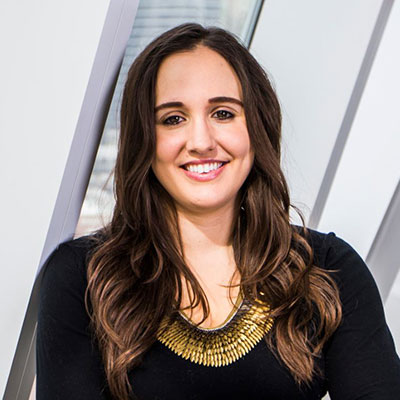
Samantha Biglieri is a practicing urban planner with The Biglieri Group Ltd., a PhD Candidate in the School of Planning at the University of Waterloo, and a Sessional Lecturer at the School of Urban & Regional Planning at Ryerson University. Samantha serves as Vice President of the Toronto Council on Aging, and does research at the intersection of planning and health - examining experiences of marginalized populations in sub/urban landscapes in order to build more accessible, inclusive places. Samantha’s published and ongoing work on dementia-inclusive urban planning/civic engagement and age-friendly policies has been featured in academic journals, international conferences, industry publications and on CBC radio.
Axess Condos: Seamlessly Integrated
The Axess project is raising the bar for accessibility in condominium buildings. Through an integrated and multidisciplinary approach, accessibility and inclusion is a core design pillar for this project. Designing well for physical accessibility and neurodiversity has challenged the team to move away from the standard approach to condominium design. Lorene and Karl will share with you the ongoing design process and the various strategies that have been implemented into the design and next steps for the Axess Project.
Karl van Es
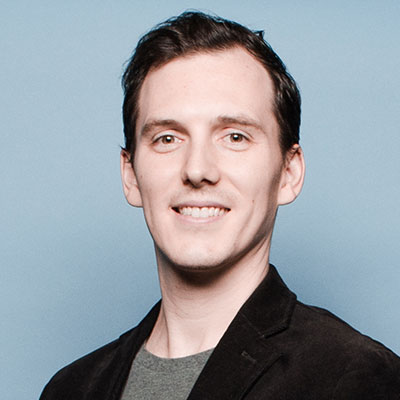
Associate, B.Arch.Sci., M.Arch., OAA
Karl brings his passion for sustainable design to Quadrangle and is well-versed in Net Zero and Passive House standards. A strong project manager, he has extensive experience in leading teams for multi-unit residential developments, with a particular emphasis on design, planning, municipal approvals and contract administration. Karl has worked on a wide range of architectural typologies both locally and internationally. His portfolio of work at Quadrangle includes Axess Condominiums, Maple Leaf Quay, 543 Richmond Street West, Indigo Condominiums Phases I, II, and III, Rosedale Village G&H, and 89-101 Roehampton Avenue. Karl is a dedicated member of our in-house Green Team and champions the development of green design strategies for multi-unit residential buildings. He also contributes to Quadrangle’s Studio as an organizer of the popular after-hours Food for Thought design discussion series.
Lorene Casiez
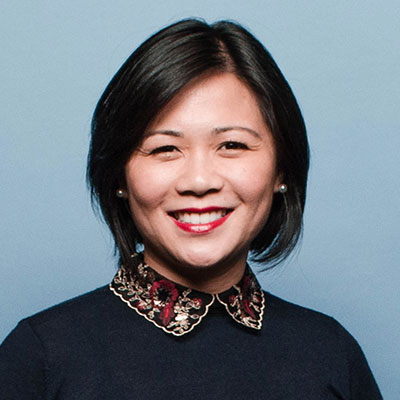
Associate, Accessibility and Wellness Practice Lead, RN, MN, BDes, WELL AP
Lorene strongly believes that the goals of inclusive design provide the basic framework of good design for all people. Lorene coordinates and manages the accessibility practice at Human Space, a division of Quadrangle, including team operations, project delivery and client relationships. Her goal is to maintain a high level of accessibility in all projects and steer the practice towards projects that will have a meaningful impact. She strategically analyzes the market and Human Space’s clients’ needs, while also contributing her technical expertise on accessibility requirements and inclusive design strategies to a range of projects. The first in Quadrangle’s Studio to become WELL certified, Lorene is also able to advise clients how to optimize their built environments for human health through the lens of inclusion.
IAAP/GAATES Certification Program for the Built Environment
Since 2007, the Global Alliance on Accessible Technologies and Environments (GAATES) has maintained an international network of experts dedicated to promoting accessibility worldwide. This year its programming has been transferred to G3ict, the Global Initiative for Inclusive Technologies, and is being managed by the Smart Cities for All Initiative and IAAP, the International Association of Accessibility Professionals.
Pina D’Intino is a member of the G3ict/IAAP Global Leadership Council and the Competencies Development and Recommendation Committee. She will explain how GAATES’ mission and values are being continued through the development of the International Certification of Accessibility Consultants – Built Environment (ICAC – BE) program.
Pina D'Intino
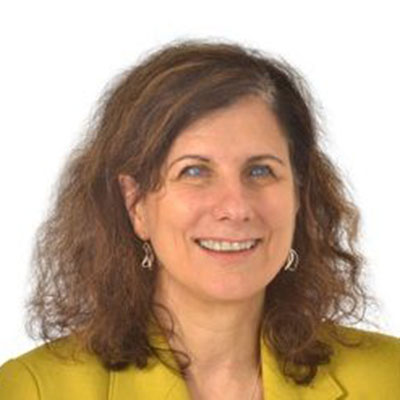
Pina is a sought-after consultant and speaker who actively promotes accessibility and inclusion from both executive-level and grassroots perspectives by bridging the view points and needs of the organization, employees, and customers to establish best-practices environments.
Pina was the Founder and co-Chair of the Canadian Financial Institute on Assistive Technologies (CFIAT); active member of Job Opportunity Information Network (JOIN), Honorary Chair of Financial Services for G3ict, and Advisor on several AODA reviews and initiatives. She is a certified PMI member, and holds a master’s degree in Design in Inclusive Design (MDes) from OCADU.
Pina was a Board Member of the International Association of Accessibility Professionals (IAAP) at its inception and is currently a member of the G3ict/IAAP Global Leadership Council. She is currently an active member of the IAAP Certification Committee, the Competencies Development and Recommendation (CDR) Committee, and was a member of both the primary CPACC Certification Committee and the 2017 CPACC Refresh Committee.
In 2013, Pina received the QE2 Diamond Jubilee medal by Canada’s Lt. Governor the Honourable David Onley for her work in accessibility in employment.
This is real life! Deaf and Hard of Hearing experiences of the built environment
Hard of hearing and Deaf members of the community face a variety of barriers – some expected and some not – that impact one’s comfort, health, and safety. This talk will explore issues with the built environment, identifying both common barriers and not very obvious barriers such as things that interfere with the working order of hearing aids, public address systems (e.g., transit announcements, fire warden announcements, etc.) that provide no clear alternatives to the auditory message, restaurants with no quiet zones, and other similar real life challenges. The talk will include some discussion of how built environments could mitigate or even resolve some of these issues.
David Fourney
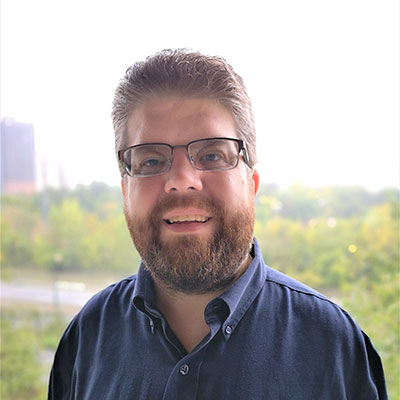
David Fourney, PhD., CPWA, is a Digital Accessibility Consultant based in Toronto with extensive experience in all forms of accessibility and inclusive design. His research interests include applied psychology, ergonomics, and industrial engineering. He has a strong passion for the field of accessibility that stems from his own experiences as a neurodiverse hard of hearing person as well as his efforts towards raising awareness and advocating for the needs of consumers with disabilities.
Your Building. Our Future.
Imagine being able to fully stand behind your building’s accessibility, no matter your guests’ needs. Increasing the amount of people that can navigate the space means less vacancies, more people spending money at the business, and opening up an available talent pool for employment.
The Rick Hansen Foundation Accessibility Certification™ (RHFAC) is the only national program that rates and certifies the built environment on its level of meaningful access, ensuring everyone has access to the places where we live, work, learn, and play. This talk will leave you understanding the critical role you play in rethinking how we navigate the built environment, along with practical information on how you can ensure your space is accessible for everyone, everywhere.
Julie Sawchuk

Having taught high school science for 16 years, Julie has now turned to teaching a new topic - accessibility. After sustaining a spinal cord injury from a collision between a car and her bike in 2015, she is living life with paralysis. One challenge that Julie faces (along with 30% of the Canadian population) is a lack of accessibility. Getting around in the community, at a friend’s homes, doing shopping, sports and attending community events all pose a different set of challenges.
Julie has been a consultant for various building projects in Huron County including Cowbell, Blyth Memorial Hall, Huron Christian School and the 2017 IPM. She has also overseen the universal design construction of her new home. She is a member of the Huron County Accessibility Advisory Committee, represents the Rick Hansen Foundation as a Speaking Ambassador and brought StopGap to Huron County. Julie is also one of the first in Ontario to be a Certified Rick Hansen Foundation Accessibility Certification Professional. She has started her own business, Sawchuk Accessible Solutions, helping companies large and small learn how easy access can be.
Elevator accessibility: Tips to be aware, making the user experience more uplifting
Today's connected elevator cabs with offerings of video and touch screen interfaces can provide a sleek journey to your floor. However we can't forget all users when considering this tech. Jason presents a case where a high tech cab retrofit created an impediment for users with certain disabilities. A bit of knowledge and advocacy helped make it better. He will provide some tips anyone can use when working with project teams or facilities management, or in fact anyone who wants to improve accessibility in their building.
Jason Boychuk

Jason is currently a senior web developer at CBC in Toronto. With 25 years of experience in different design disciplines, Jason considers himself a bit of a design vagabond. Beginning with a degree in interior design, interning at various architectural firms, he morphed into print design and eventually web information architecture, design and development. Jason is also chair of abilicrew, CBC's employee resource group (ERG) for staff with disabilities.
What Are the Barriers Impeding Our Society from Creating an Accessible Built Environment, and How Do we Remove those Barriers?
TBD
David Lepofsky
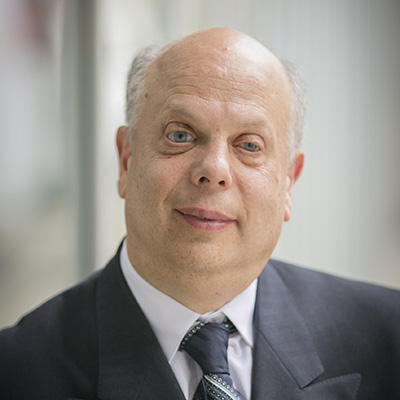
David Lepofsky CM, O. Ont, LLB (Osgoode Hall Law School 1979), LL. M (Harvard Law School 1982) LL.D. (Hon.) (Queens 1999, University of western Ontario 2006, Law Society of Upper Canada 2016)
David Lepofsky is a visiting professor of Disability Rights and Legal Education (part-time) at the Osgoode Hall Law School and an adjunct member of the University of Toronto Faculty of Law. He holds volunteer leadership roles in the disability community. He is chair of the Accessibility for Ontarians with Disabilities Act Alliance. He is a member and past chair of the Toronto District School Board’s Special Education Advisory Committee.

